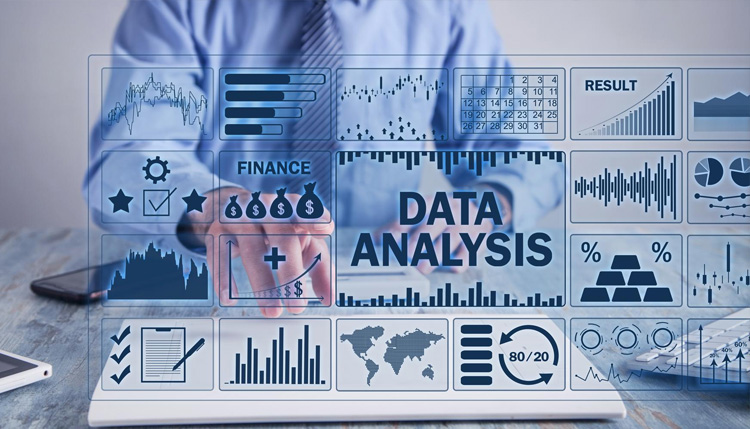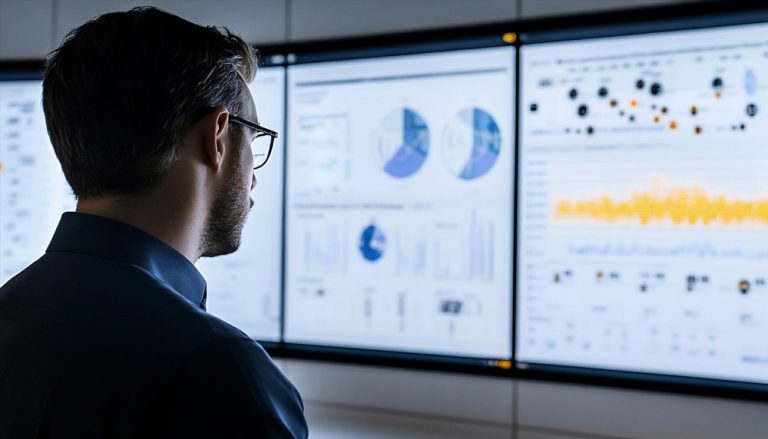
Last updated on July 4, 2024
Understanding Big Data Analytics
In the digital age, data is generated rapidly. Digital actions leave traces that comprise “big data.” Big Data Analytics examines large, varied data sets to uncover patterns, correlations, trends, and customer preferences – insights that inform business decisions. This blog explores the essentials of big data analytics, its importance, tools, and impact on the future.
The Essence of Big Data
Big data is defined by three key characteristics: volume, velocity, and variety. Volume refers to the immense amounts of data generated continuously. Velocity is the speed at which this data is produced and processed. Variety encompasses the different types of data, including structured, semi-structured, and unstructured formats.
Big data’s scale exceeds traditional databases and tools, requiring advanced analytics to derive value from it. This is the role of big data analytics.
The Importance of Big Data Analytics
- Enhanced Decision Making: Big data analytics helps organizations analyze trends and patterns to inform strategic decisions, leading to better business outcomes and a competitive edge.
- Operational Efficiency: Analyzing operational data can help businesses identify inefficiencies and areas for improvement, leading to cost savings, streamlined operations, and enhanced productivity.
- Customer Insights: Big data analytics helps businesses understand customer behavior and preferences. It enables profiling, trend prediction, and personalized experiences, boosting customer satisfaction and loyalty.
- Risk Management: Analytics can identify potential risks by analyzing data patterns and anomalies, enabling businesses to take proactive risk mitigation measures.
- Innovation: Big data insights can drive innovation and growth by enabling new product and service development.
Tools and Technologies in Big Data Analytics
Several tools and technologies are integral to big data analytics. Here are some of the most prominent ones:
1. Hadoop
Hadoop is an open-source framework for distributed processing of large data sets across computer clusters. It can scale from single servers to thousands of machines, providing local computation and storage.
2. Apache Spark
Apache Spark is an open-source unified analytics engine for big data processing. It has built-in modules for streaming, SQL, machine learning, and graph processing, and is known for its speed and ease of use.
3. NoSQL Databases
Traditional SQL databases struggle with big data scale and complexity. NoSQL databases like MongoDB, Cassandra, and Couchbase are designed to handle large volumes of unstructured data, making them well-suited for big data applications.
4. Data Visualization Tools
Tools like Tableau, Power BI, and QlikView are essential for visualizing big data insights. They provide interactive dashboards and reports to help stakeholders understand complex data and make informed decisions.
5. Machine Learning
Machine learning powers big data analytics. These algorithms analyze large datasets to identify patterns and make predictions. Tools like TensorFlow, PyTorch, and Scikit-learn are widely used for this purpose.
The Process of Big Data Analytics
The process of big data analytics typically involves several key steps:
- Data Collection: Data can be gathered from various sources, including social media, sensors, and transactions. This data may be structured, semi-structured, or unstructured.
- Data Storage: Storing collected data in a way that enables analysis often involves distributed storage like Hadoop HDFS or cloud-based solutions such as Amazon S3.
- Data Processing: Preparing data for analysis often involves cleaning and organizing it, including data wrangling and ETL (Extract, Transform, Load) processes.
- Data Analysis: Applying statistical and machine learning techniques can extract insights from data. This step may involve complex algorithms and models.
- Data Visualization: Presenting data visually in easy-to-understand formats is helpful. Visualization tools enable creating dashboards, charts, and reports.
- Decision Making: The ultimate goal of big data analytics is to use the insights gained from analysis to make informed business decisions.
The Future of Big Data Analytics
Big data analytics has a bright future, driven by advancements in AI, machine learning, and cloud computing. Key trends include real-time analytics, predictive analytics, and integrating IoT with big data.
Big data analytics is transforming business, providing unprecedented insights and driving strategic decisions. As technology evolves, big data capabilities will expand, opening new horizons globally. Embracing big data analytics is essential for staying competitive in the digital age. For more information, please visit www.blancoinfotech.com.






